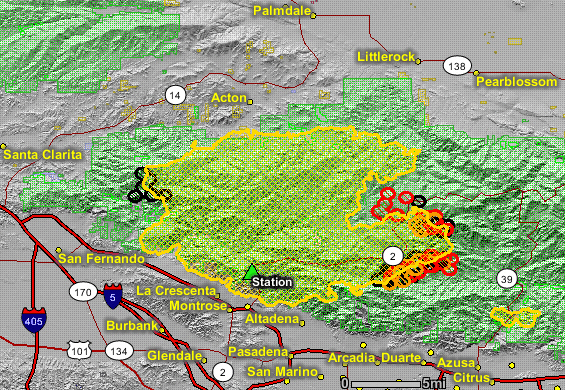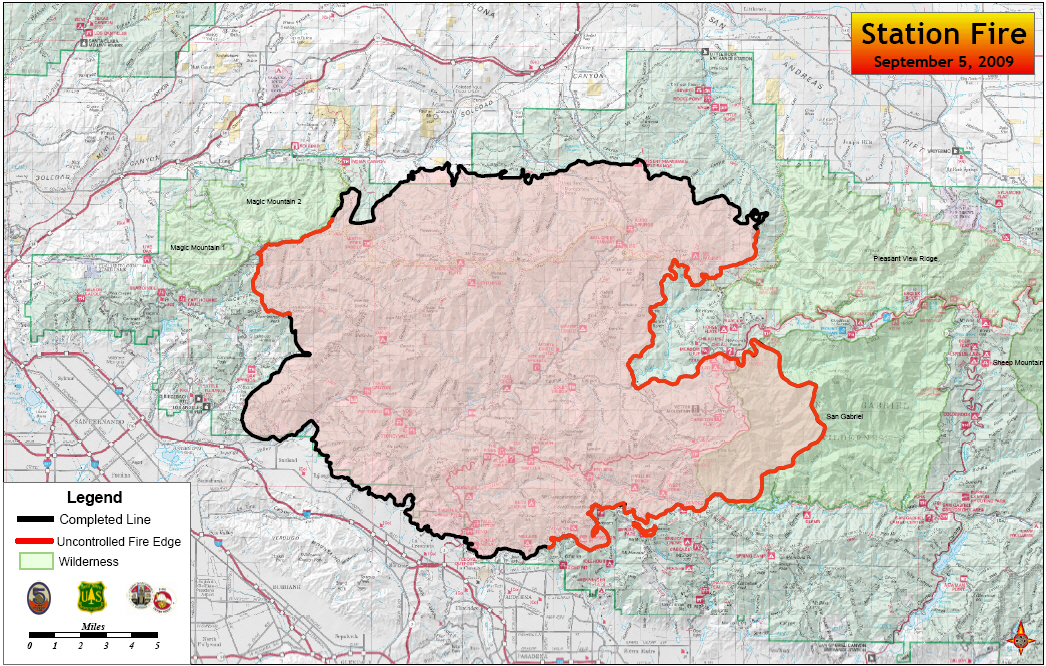Here is the preliminary, or “72-hour” report, issued by the Los Angeles County Fire Department about the two firefighters that were killed on the Station fire near Los Angeles on August 30, 2009.
=========================================================
GREEN SHEET
INFORMATIONAL SUMMARY REPORT
Camp 16 Incident Vehicle Accident and Fatalities
August 30, 2009
CA-LAC-09196997
This Informational Summary Report is intended as an aid in accident prevention, and to provide factual information from the first 72 hours of the accident review. To that end it is published and distributed within a short time frame. Information contained within may be subject to revision as further investigation is conducted, and other reports and documents are received.
SYNOPSIS
On the afternoon of Sunday, August 30, 2009, at approximately 1645 hours, a County of Los Angeles Fire Department, Camp Superintendant (Fire Captain) and Camp Foreman (Fire Fighter Specialist) were involved in a single vehicle accident near Los Angeles County Fire Camp 16 (near Mt. Gleason).
Both firefighters died as a result of their injuries.
72 additional personnel were assigned to provide structure protection for Fire Camp 16 and they were forced to use structures, vehicles and fire shelters for protection from the rapidly approaching fire front.
These additional personnel included 2 Type 1 Engine Companies, 1 Type 4 Patrol, 1 Battalion Chief, 3 Crew Foreman, 3 California Department of Correction and Rehabilitation employees and 55 inmate firefighters.
Several of the personnel received injuries while trying to access and render aid to the firefighters who were involved in the vehicle accident and during the sheltering events.
NARRATIVE
On Saturday, August 29, the decision was made to evacuate all non-essential personnel from Fire Camp 16 due to the advancing fire front. A plan for defending the camp was developed and briefed to all of the remaining personnel.
On Sunday, August 30, 2009 at approximately 1500 hrs, personnel gathered at the camp helipad and observed fire to the west of the camp. At approximately 1530 hours, the decision was made to feed the inmate firefighters in anticipation of increased fire activity.
At approximately 1615 hours the fire conditions around the camp began to deteriorate very rapidly. There was an increase in temperature and wind speed. The decision was made to “shelter in place” the inmate firefighters while the engines and patrol were deployed as per the briefed plan.
During this time frame the Camp Superintendant and Camp Foreman drove to the area of the helipad and began a firing operation that was part of the briefed plan.
At approximately 1630 hours the dining facility was becoming untenable due to fire involvement. The order was given to the inmate firefighters to prepare fire shelters for deployment.
At this point there was radio traffic from the Battalion Chief advising all personnel to move to the north of the dining facility where there were better conditions. The personnel moved to the north with some utilizing their shelters to protect themselves. When they arrived at the crew transports they were directed to enter the transports for additional protection.
At approximately 1715 hours an accounting of all personnel began and it was determined that two personnel were missing. A search of the area was started for the missing individuals and their vehicle.
A short time later the missing vehicle was located approximately 800 feet below the road and it was determined that both the Camp Superintendant and the Camp Foreman had received fatal injuries.
CONTINUED SAFETY CONSIDERATIONS FOR EXTREME FIRE BEHAVIOR
Have adequate resources available to support all emergency operations at all times.
Maintain current information on fire weather forecasts and expected fire behavior. Identify adequate safety zones and escape routes, and update them regularly.
Maintain Situational Awareness and know what the fire is doing at all times.
Identify trigger points which allow for adequate time to evacuate after receiving notification by posted lookouts.







